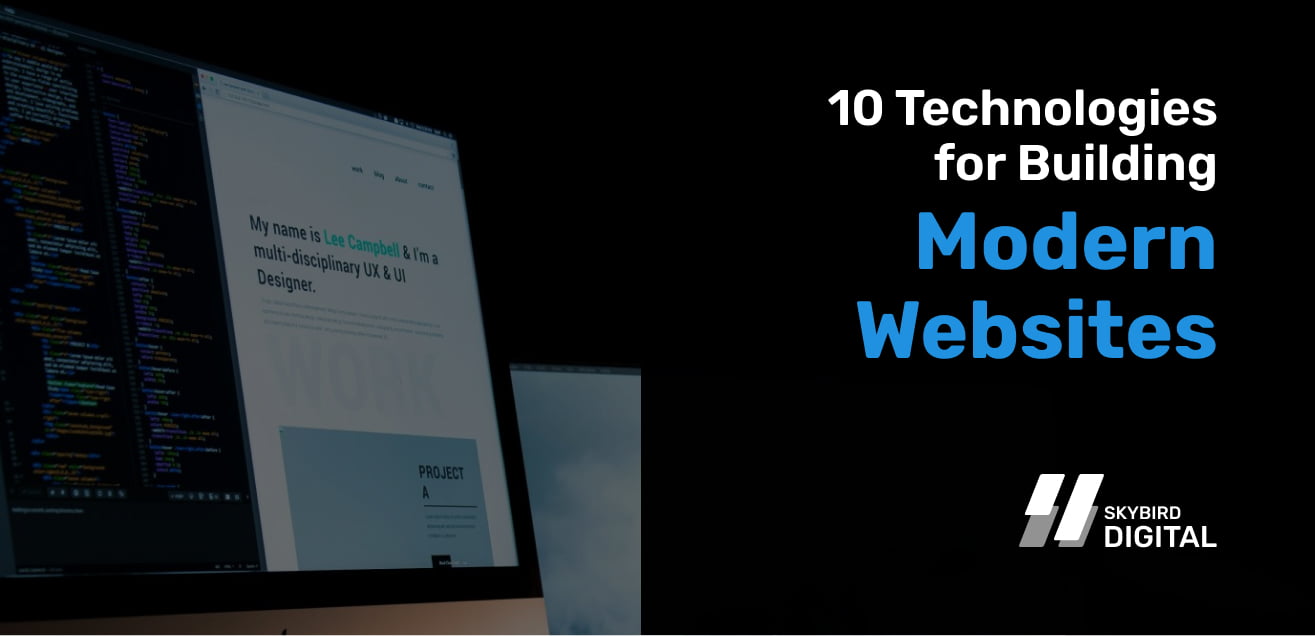Creating a modern website design requires utilizing the latest technologies to ensure performance, security, and user experience. Here are the top 10 technologies you should consider for building contemporary websites in 2025.
Here is top 10 Technologies for Building Modern Websites Design
1. HTML5
HTML5 is the backbone of web development. It provides the structure for web pages and supports multimedia elements without the need for external plugins. Additionally, it offers improved semantics, which enhances search engine optimization (SEO).
Pros:
- Enhanced Media Support: Native support for audio and video elements.
- Improved Semantics: Better SEO and accessibility through semantic tags.
- Offline Capabilities: Through the use of local storage and application cache.
Cons:
- Browser Compatibility Issues: Older browsers may not fully support HTML5.
- Learning Curve: Some new tags and features may require a learning period.
2. CSS3
CSS3 brings style to your web pages. It enables developers to create visually appealing layouts with advanced features like animations, transitions, and responsive designs.
Pros:
- Advanced Styling: Supports animations, transitions, and transformations.
- Responsive Design: Facilitates the creation of mobile-friendly websites.
- Modular Design: CSS3 modules make it easier to manage and update styles.
Cons:
- Complexity: Advanced features can be complex to implement and troubleshoot.
- Browser Compatibility: Some CSS3 properties may not be supported in older browsers.
3. JavaScript
JavaScript is essential for interactive web applications. It allows developers to create dynamic content, control multimedia, and animate images.
Pros:
- Interactivity: Enables the creation of dynamic and interactive web pages.
- Versatility: Can be used on both client-side and server-side (with Node.js).
- Rich Ecosystem: Extensive libraries and frameworks (e.g., React, Angular).
Cons:
- Security Vulnerabilities: Prone to security issues like cross-site scripting (XSS).
- Performance Issues: Improper use can lead to performance bottlenecks.
4. React
React, a JavaScript library developed by Facebook, is renowned for building user interfaces. It enables developers to create reusable UI components, which enhances development efficiency and performance.
Pros:
- Component-Based Architecture: Facilitates code reusability and maintenance.
- Virtual DOM: Improves performance by minimizing direct DOM manipulation.
- Strong Community Support: Extensive resources and a large community.
Cons:
- Steep Learning Curve: Requires understanding of JSX and component lifecycle.
- Tooling Complexity: Managing React’s ecosystem and tooling can be complex.
5. Angular
Angular is a robust framework maintained by Google. It is ideal for building single-page applications (SPAs) with a rich feature set.
Pros:
- Two-Way Data Binding: Simplifies synchronization between the model and view.
- Comprehensive Framework: Includes everything needed for large-scale applications.
- Strong Support and Documentation: Backed by Google with extensive resources.
Cons:
- Complexity: Steep learning curve, especially for beginners.
- Performance Overhead: Can be resource-intensive for smaller applications.
6. Vue.js
Vue.js is a progressive JavaScript framework known for its simplicity and flexibility. It is perfect for building user interfaces and single-page applications.
Pros:
- Ease of Learning: Gentle learning curve with clear documentation.
- Flexibility: Can be used for both simple and complex applications.
- Performance: Lightweight and efficient, suitable for high-performance applications.
Cons:
- Smaller Ecosystem: Compared to React and Angular, Vue.js has a smaller community.
- Less Corporate Support: Primarily community-driven with less corporate backing.
7. Node.js
Node.js allows developers to use JavaScript on the server side. This leads to faster development and deployment of scalable network applications.
Pros:
- Single Language: JavaScript can be used for both client and server-side code.
- High Performance: Non-blocking, event-driven architecture.
- Scalability: Suitable for building scalable network applications.
Cons:
- Callback Hell: Can lead to complex and hard-to-maintain code.
- Maturity: Some libraries and tools may not be as mature as those in other ecosystems.
8. Bootstrap
Bootstrap is a popular CSS framework for developing responsive and mobile-first websites. It provides pre-designed components and utilities, which speed up the development process.
Pros:
- Responsive Design: Ensures websites look good on all devices.
- Pre-Designed Components: Speeds up development with ready-to-use elements.
- Community Support: Extensive documentation and community resources.
Cons:
- Uniform Look: Websites may look similar due to common Bootstrap styles.
- Overhead: Can be heavy and include unused CSS if not customized.
9. Sass
Sass (Syntactically Awesome Stylesheets) is a CSS preprocessor that enhances CSS with features like variables, nested rules, and mixins.
Pros:
- Code Reusability: Variables and mixins allow for reusable code.
- Nested Syntax: More readable and maintainable CSS.
- Extensibility: Supports various extensions and plugins.
Cons:
- Compilation Step: Requires a build process to compile Sass to CSS.
- Learning Curve: Some features may be difficult for beginners to grasp.
10. WebAssembly
WebAssembly (Wasm) is a binary instruction format that allows code written in multiple languages to run on the web at near-native speed.
Pros:
- Performance: Near-native execution speed.
- Language Flexibility: Supports various programming languages.
- Security: Runs in a sandboxed environment, enhancing security.
Cons:
- Browser Support: While growing, not all browsers fully support WebAssembly.
- Complexity: Requires additional tools and knowledge to implement effectively.
Conclusion: Embracing the Future of Web Development with CSS Frameworks
In conclusion, these top 10 technologies are pivotal for building modern websites. Each technology offers unique benefits and can significantly enhance your web development projects. By staying updated with these technologies, you ensure your websites are fast, responsive, and user-friendly.

FAQ
Q: What is the importance of using HTML5 for modern web development?
A: HTML5 provides the foundational structure for web pages and supports multimedia elements without external plugins, enhancing SEO and user experience.
Q: How does CSS3 improve web modern website design?
A: CSS3 enables advanced styling options, including animations and responsive designs, making web pages visually appealing and adaptable to different devices.
Q: Why is JavaScript crucial for interactive modern website design?
A: JavaScript allows the creation of dynamic content and interactive features, which are essential for engaging and functional web applications.
Q: What makes React a popular choice for developers?
A: React’s component-based architecture and virtual DOM make it efficient and reusable, with strong community support and extensive resources available.
By leveraging these top technologies, developers can ensure their websites are well-equipped to handle the evolving needs of users and the web development landscape.
By incorporating these technologies into your development process, you can build modern, efficient, and engaging websites that meet the demands of today’s users.
Get FREE Quote
for a free Modern Website Design.

